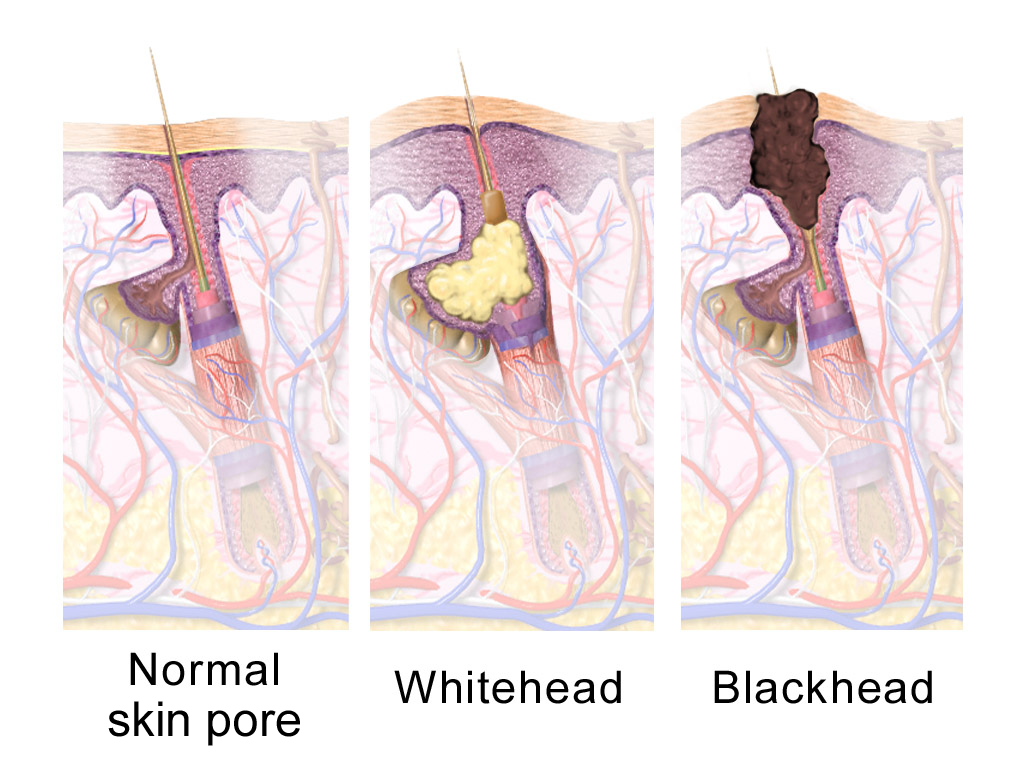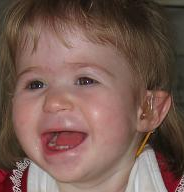-
Diabetes Mellitus, Permanent Neonatal
Omim
In addition, the proband's maternal grandmother, who was heterozygous for the mutation, developed insulin-requiring diabetes mellitus at age 45, and a maternal aunt and uncle, for whom DNA was not available, were diagnosed with insulin-requiring diabetes mellitus at 28 and 36 years of age, respectively.
-
Volvulus
Wikipedia
July 2013. Archived from the original on 28 July 2016 . Retrieved 3 August 2016 . ^ a b c d e f g h Marx, John; Walls, Ron; Hockberger, Robert (2013). "95" .
-
Comedo
Wikipedia
. ^ a b c d e f g h i j k l m n o p q r s t u Williams, HC; Dellavalle, RP; Garner, S (Jan 28, 2012). "Acne vulgaris". Lancet . 379 (9813): 361–72. doi : 10.1016/S0140-6736(11)60321-8 .LIPH, NEK9, LRP1, LPAR6, ERBB2, TP53, ESR1, PGR, S100A7, HSPB3, SET, UVRAG, VWF, TP63, DYNLL1, P4HA2, PARP1, THOC1, TXNIP, HPSE, CKAP4, RASSF1, BRMS1, CD274, PSENEN, INTS2, LOC102723407, S100B, LGMN, S100A1, RPE65, BCL2, BRCA1, CD79A, CISH, COL11A2, CTSV, CYC1, DEFB1, EGF, EGFR, ERBB3, FGF3, HSPB1, HSPB2, IL1B, KRT5, KRT10, LGALS3, NME1, OTC, CCND1, LOC102724971
- Boil Wikipedia
-
Hypogonadotropic Hypogonadism 23 Without Anosmia
Omim
The 43-year-old brother had received intramuscular testosterone treatment for hypogonadism since age 28, but with poor adherence. Examination after 3 months off treatment showed virilization with normal masculine features, including normal penile length and low-normal testis volume.
-
Ischemic Cardiomyopathy
Wikipedia
. ^ Falk, Erling; Shah, Prediman; Feyter, Pim de (2007-03-28). Ischemic Heart Disease . CRC Press. p. 226.WNT16, LMNA, KIF26B, ACE, SLC6A8, CALCR, CALR, GJA1, SLC5A1, ACE2, VEGFA, CSF3, CXCL12, ADIPOQ, NCAM1, MIR126, TNF, PLN, MAPK3, DMD, TPO, TM7SF2, TXN, ADCYAP1, TIMP1, TGFB1, TEK, SPP1, CSRP3, SP100, SLC6A4, SLC5A2, SDHB, SCD, PXDN, ABCG2, PDE5A, MBTPS1, MIR508, MIR21, IL34, ZBP1, NOX5, MARCKSL1, RHOU, SUGP1, PCDHGA3, TRPM7, RNF111, ASB1, FOXP3, NOX4, HIPK2, ANKRD1, PHLDA1, PTGDR2, CITED2, RENBP, HAND1, ATXN1, PGF, RBP4, FOXM1, ESRRB, ESR1, CHRNA4, CEBPD, SCARB1, RUNX1, CASP3, CACNA1C, VPS51, BCL3, AXL, ATP2A2, ARHGAP1, ANGPT2, ANGPT1, ALB, ALAS2, AKT1, AGT, GRK3, GRK2, PTK2B, GATA4, ABCB1, GH1, ADRB1, SERPINE1, OGG1, ROR1, NOS2, NOS1, MYC, MUC2, MPO, MMP3, MME, SMAD2, IL18, IL6, CCN1, IGFBP3, IGF1, IFIT3, HIF1A, HGF, GRK5, MIR662
-
Oculodentodigital Dysplasia
Omim
Paznekas et al. (2009) reported 18 new GJA1 mutations in 28 ODDD cases, and reviewed the 62 known mutations in GJA1 as well as the phenotypic information available on 177 affected individuals from 54 genotyped families.
-
Eosinophilic Gastroenteritis
Wikipedia
Various steroid sparing agents e.g. sodium cromoglycate (a stabilizer of mast cell membranes ), ketotifen (an antihistamine ), and montelukast (a selective, competitive leukotriene receptor antagonist ) have been proposed, centering on an allergic hypothesis, with mixed results. [19] [27] Oral budesonide (an oral steroid) can be useful in treatment, as well. [28] An elimination diet may be successful if a limited number of food allergies are identified. [21] [29] In a randomized clinical trial , lirentelimab was found to improve eosinophil counts and symptoms in individuals with eosinophilic gastritis and duodenitis. [30] [31] Epidemiology [ edit ] Epidemiology may differ between studies, as number of cases are small, with approximately 300 EG cases reported in published literature.
- Pyruvate Dehydrogenase Deficiency Wikipedia
- Robinow Syndrome, Autosomal Recessive 1 Omim
- Multicentric Osteolysis Nodulosis And Arthropathy Gene_reviews
- Arthrogryposis, Distal, Type 1a Omim
- Pantothenate Kinase-Associated Neurodegeneration Wikipedia
- Niemann-Pick Disease, Type B Omim
- Glut1 Deficiency Syndrome 1 Omim
-
Portopulmonary Hypertension
Wikipedia
Calcium channel blockers , b-blockers and nitrates have all been used – but the most potent and widely used aids are prostaglandin (and prostacyclin) analogs, phosphodiesterase inhibitors , nitric oxide and, most recently, endothelin receptor antagonists and agents capable of reversing the remodeling of pulmonary vasculature. [ citation needed ] Inhaled nitric oxide vasodilates, decreasing pulmonary arterial pressure (PAP) and pulmonary vascular resistance (PVR) without affecting systemic artery pressure because it is rapidly inactivated by hemoglobin, [27] and improves oxygenation by redistributing pulmonary blood flow to ventilated areas of lung. [28] Inhaled nitric oxide has been used successfully to bridge patients through liver transplantation and the immediate perioperative period, but there are two significant drawbacks: it requires intubation and cannot be used for long periods of time due to methemoglobinemia . [ citation needed ] Prostaglandin PGE1 (Alprostadil) binds G-protein linked cell surface receptors that activate adenylate cyclase to relax vascular smooth muscle. [29] Prostacyclin – PGI2, an arachadonic acid derived lipid mediator (Epoprostenol, Flolan, Treprostenil) – is a vasodilator and, at the same time, the most potent inhibitor of platelet aggregation. [30] More importantly, PGI2 (and not nitrous oxide) is also associated with an improvement in splanchnic perfusion and oxygenation. [31] Epoprostenol and ilioprost (a more stable, longer acting variation [32] ) can and does successfully bridge for patients to transplant. [33] Epoprostenol therapy can lower PAP by 29-46% and PVR by 21-71%., [34] Ilioprost shows no evidence of generating tolerance, increases cardiac output and improves gas exchange while lowering PAP and PVR. [35] A subset of patients does not respond to any therapy, likely having fixed vascular anatomic changes. [ citation needed ] Phosphodiesterase inhibitors (PDE-i) have been employed with excellent results.
-
Glut1 Deficiency Syndrome 2
Omim
Precipitating factors included exertion (89%), particularly prolonged brisk walking, stress (39%), starvation (28%) and sleep deprivation (6%). All patients had involvement of the legs: 9 (50%) reported involuntary movements suggestive of choreoathetosis alone, 3 (17%) of dystonia, and 6 (33%) of both.
-
Lymphedema-Distichiasis Syndrome
Omim
Kumar et al. (2007) reported a 3-generation family from Jordan in which 12 members had lymphedema-distichiasis; 10 were alive at the time of the study, including a pair of affected identical twins who were discordant for the phenotype, as only 1 had lymphedema and varicose veins at age 28 years. The findings suggested that phenotypic variation in the disorder is not always due to modifying genes.
- Chromosome 1p36 Deletion Syndrome Omim
-
Usher Syndrome, Type Iia
Omim
Cystic macular lesions complicated the central retinal structure in both genotypes. Bernal et al. (2005) studied 28 Spanish patients with Usher syndrome type II, identifying 10 different pathogenic mutations and 17 polymorphisms in the USH2A gene.MYO7A, PCDH15, HARS1, PLD4, USH1C, ADGRV1, USH2A, CDH23, CEP250, ARSG, PROM1, CLRN1, ZDHHC24, CDH23-AS1, TRNS2, BBS1, GUCA1A, WHRN, USH1G, PDZD7, CIB2, GJB2, ESPN, HTC2, GC, CEP78, ABHD12, PCARE, GPR166P, LGR6, INTS2, VN1R17P, MRGPRX1, FADS6, MRGPRX3, MRGPRX4, ASIC5, GPR151, OXER1, LCA5, GPRC6A, VEZT, ACTB, MYO15A, PRPH2, ENG, FGF3, GBX2, MEF2C, MYO5B, NOTCH2, NUCB2, OMP, PEX6, RCVRN, RPGR, PHPT1, SOX3, STATH, USH1E, WFS1, FZD4, OTOF, CIB1, ASAH1, NINL, LPAR3, IMMT






